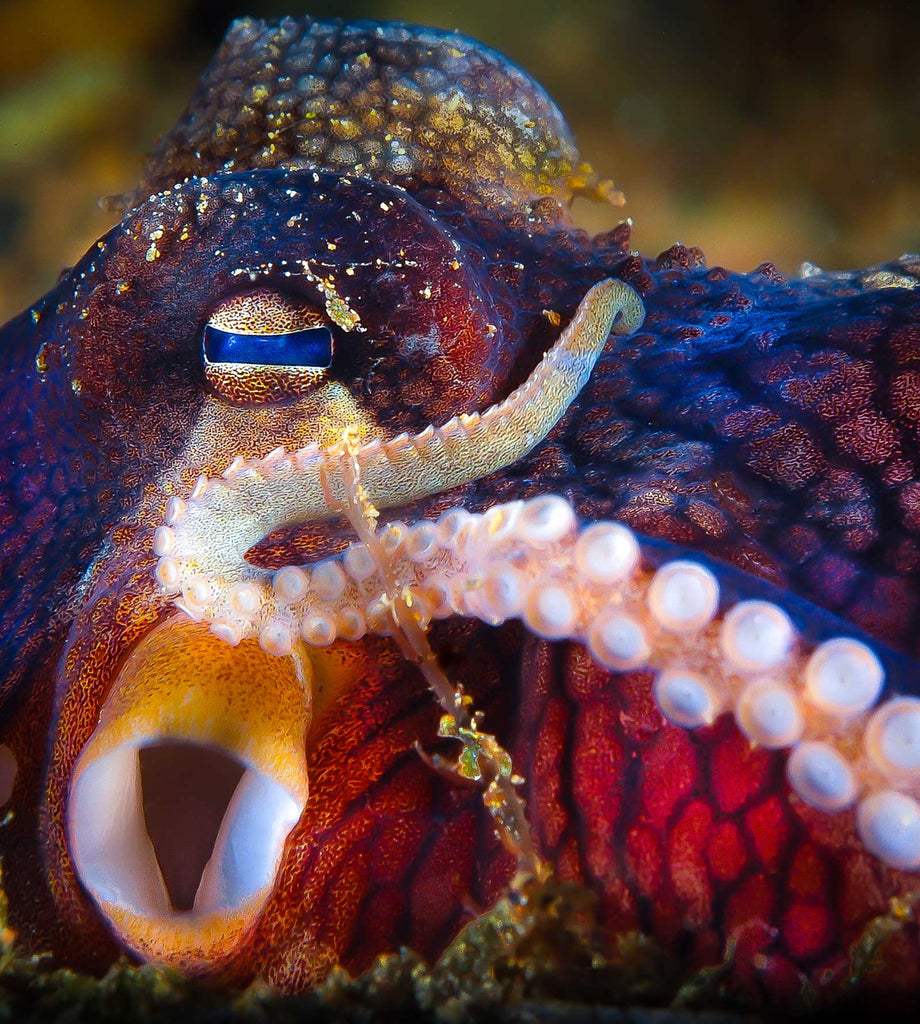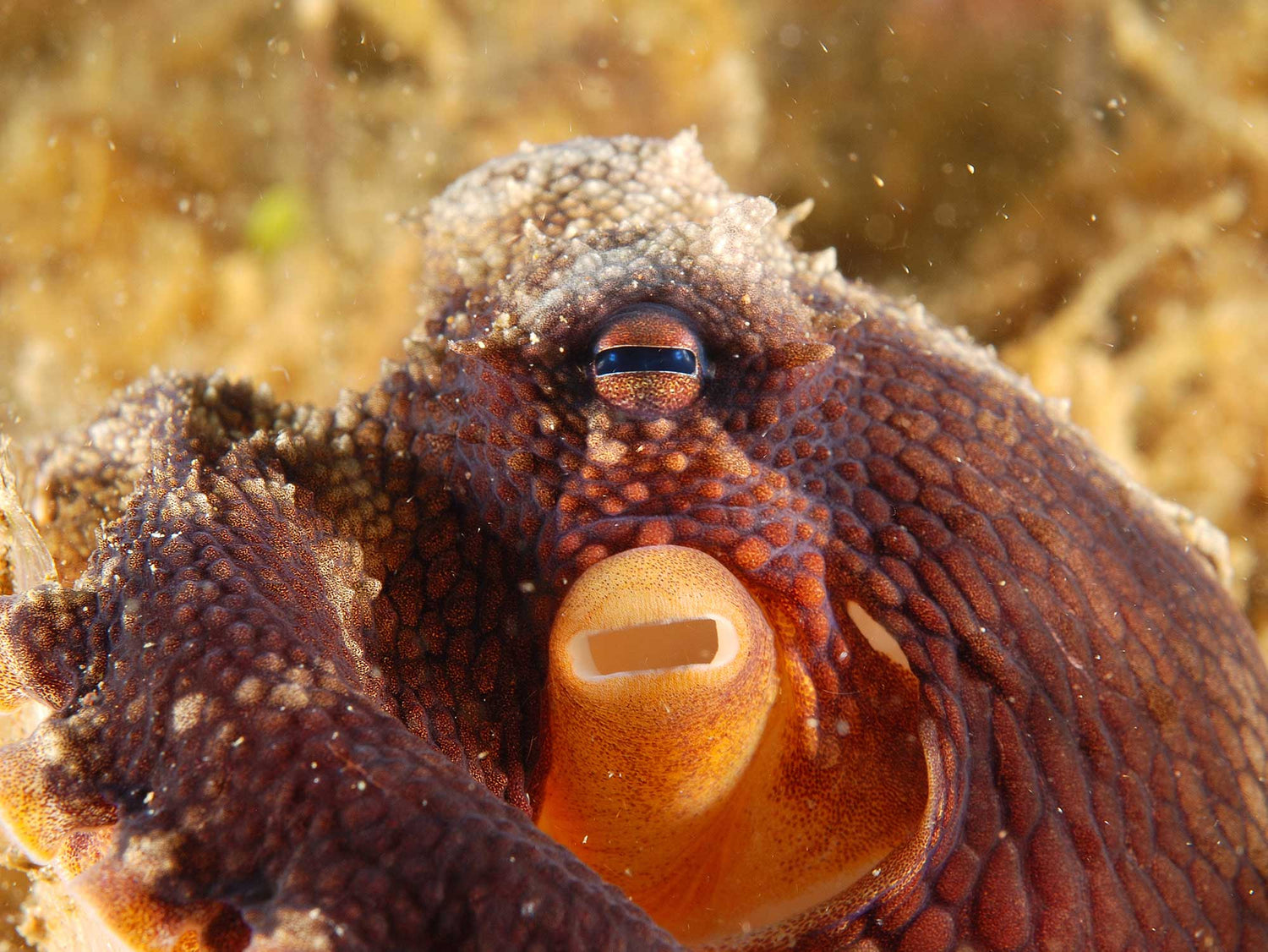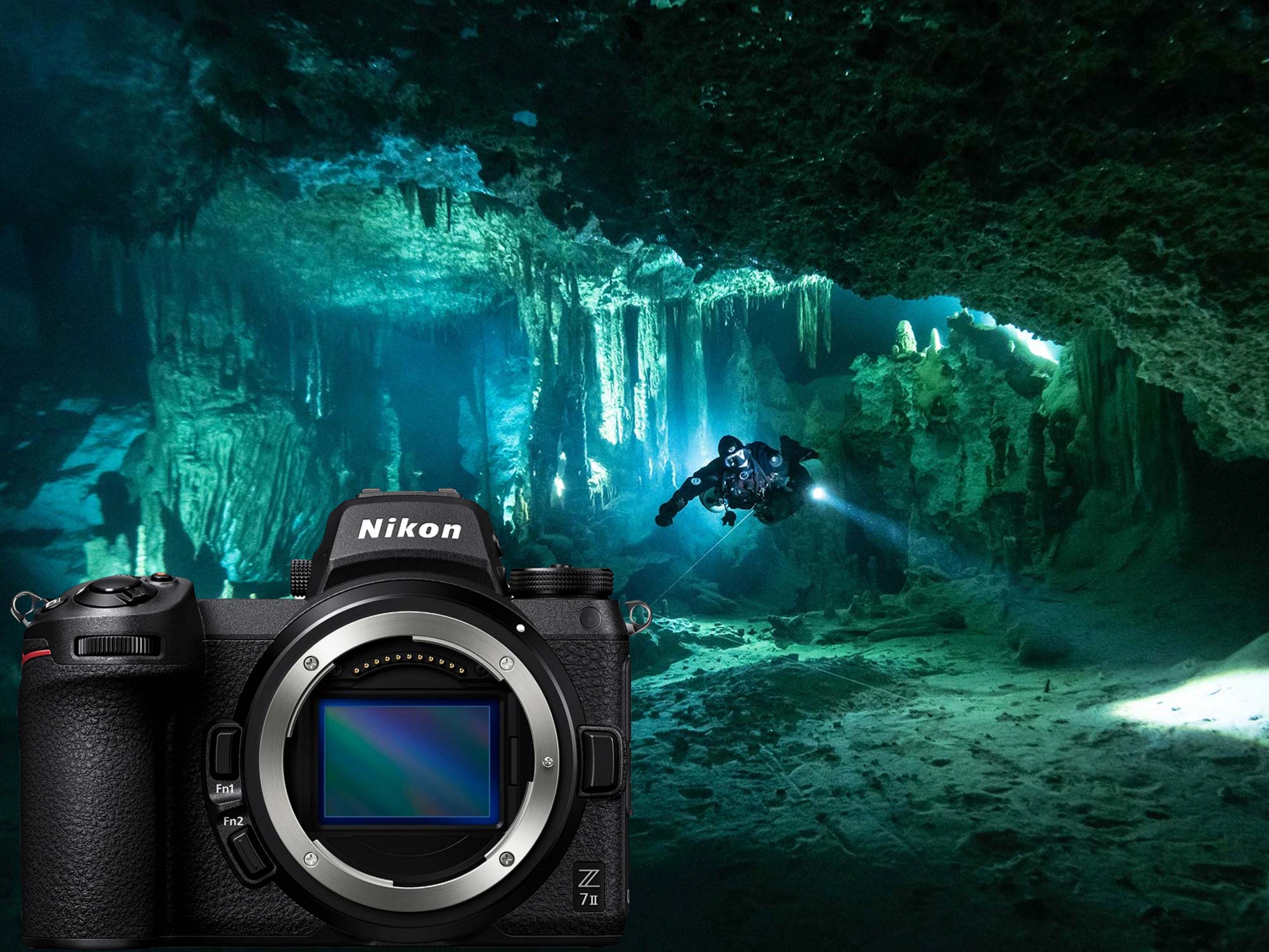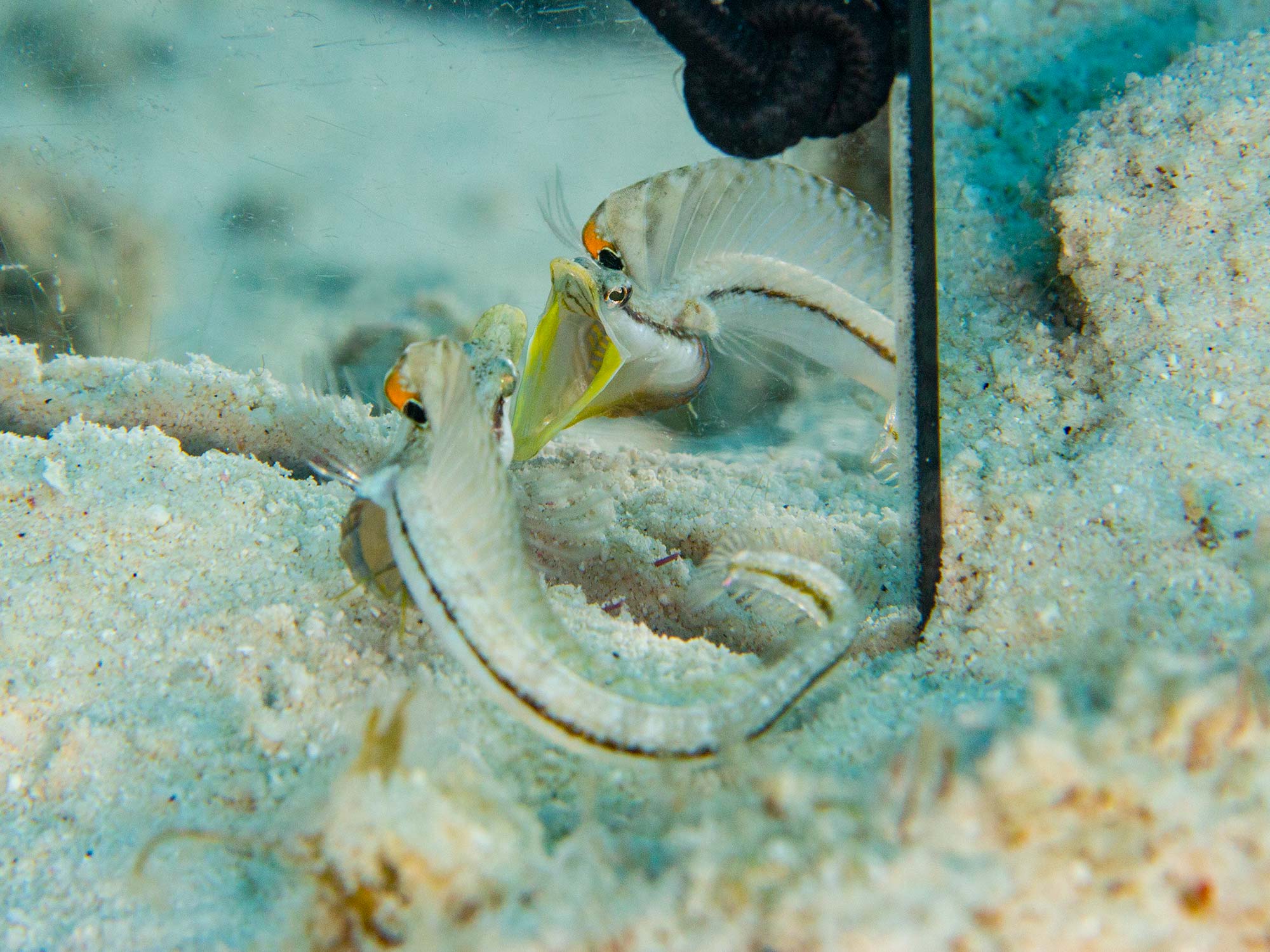By Steve Miller
"We saw an octopus!" is often overheard from excited divers climbing back on board following a night dive. "They are nocturnal, so you can only see them at night" is something you often hear as well, but that is not necessarily true.
There are 300 species of octopus, and they can be seen in all oceans from shallow tidal pools, that they may investigate one at a time, to 30,000 feet down (9,144 meters) viewed from submersibles.

Two thirds of octopus neurons are located within their tentacles, they can taste and learn a lot from exploring with their limbs. © 2022 Steve Miller
Masters of Camouflage
Divers can often spot an octopus "cave" from the debris laying in the sand, remnants of crabs and shells just outside the opening. If there are eggs inside (thousands!) she will be on guard, fanning them with the current from her siphon.
Octopuses are famous for their camouflage and most can appear to be many colors, depending on their surroundings. During the day you may only notice them out of the corner of your eyes when a piece of coral or the seafloor seems to “move.” At night they often display a wider range of colors and textures as they attempt to blend in to the reef, which now has the reds, oranges, and yellows from your dive light.

The Reach. Males will deposit a packet of spermatozoa in the female's mantle to fertilize her eggs. Both male and female octopuses will die after mating. The female octopuses will live long enough to brood over their eggs and die after they hatch. © 2022 Steve Miller
Deep (Sea) Thinkers
The octopuses in most of these images are commonly referred to as "Day Octopuses" in Wakatobi and Yap, because they are so often seen in broad daylight. But typically they don't stray very far from a favorite hole or cave. Once they have decided to seek shelter, photo opportunities are limited.
If you are lucky enough to spot a large octopus sitting up high and proud on a coral head, take a good look around and see if there isn't another nearby. If so, stay still and you may be in for a treat. While occupied in mating behaviors, they are loathe to move from their chosen area.
You should do nothing for the first minute or so. The octopus will know you are there (our bubbles are hard to miss) and will be measuring up your threat risk. It cannot be overstated how smart these animals are. Compared to most any other fish, all octopuses are rocket scientists. They can escape from complex situations and are even capable of using tools. They will move away if you aren't careful, and the last thing we want to do is disturb or disrupt them.

Staying low and coming in slowly will allow you to get in close without appearing threatening. Notice the use of a "reef stick" to avoid coming in contact with the coral while looking through the lens. We place these carefully onto the rock, or periphery of corals, to avoid any impact. © 2022 Steve Miller
Friendly Encounters For the Win
The key to shooting octopuses is to not appear as a threat. Approach them slowly, circuitously, and without direct eye contact. Choose as low of a vantage point as you can manage, then stop several feet away for your first image. If you do this properly, they will allow you to shoot as many frames as you wish. Despite their highly evolved eyes, flash does not seem to bother them, but high powered video lights would not be the best choice for stills in this situation.
It's always satisfying to swim away from an octopus encounter knowing you captured some strong images. But it's only in good conscience when you know that they are still going about their business as they were before you found them.

Close up of the eye and siphon. The siphon is used to swim, steer, and also clean their eggs. © 2022 Steve Miller
Octopus Fun Facts
- Octopuses have three hearts and blue blood.
- Their arms can taste and regenerate.
- Their nine brains can use tools, solve problems, and remember.
- Boneless, they can fit any shape and move through small openings.
- Although color blind, they can mimic the colors of the reef.
- Octopus have about 500 million neurons, similar to dogs.

Octopuses have chromatophores, which help their skin change color and that's what make them such amazing camouflage artists. But they also have papillae, which help their skin change texture as well, taking their camouflage game to the next level. © 2022 Steve Miller
 Ambassador Steve Miller has been a passionate teacher of underwater photography since 1980. In addition to creating aspirational photos as an ambassador, he leads the Ikelite Photo School, conducts equipment testing, contributes content and photography, represents us at dive shows and events, provides one-on-one photo advice to customers, and participates in product research and development. Steve also works as a Guest Experience Manager for the Wakatobi Dive Resort in Indonesia. In his "free" time he busies himself tweaking his very own Backyard Underwater Photo Studio which he's built for testing equipment and techniques. Read more...
Ambassador Steve Miller has been a passionate teacher of underwater photography since 1980. In addition to creating aspirational photos as an ambassador, he leads the Ikelite Photo School, conducts equipment testing, contributes content and photography, represents us at dive shows and events, provides one-on-one photo advice to customers, and participates in product research and development. Steve also works as a Guest Experience Manager for the Wakatobi Dive Resort in Indonesia. In his "free" time he busies himself tweaking his very own Backyard Underwater Photo Studio which he's built for testing equipment and techniques. Read more...
Want the easy way to improve your underwater photography? Sign up for our weekly newsletter for articles and videos directly in your inbox every Friday:
Additional Reading
Customer Photos | Les Rotkiewicz Octopuses on Parade
Wakatobi Resort Reopens Post-COVID
Shooting the Colorful and Camouflaged Crocodilefish
Close Focus Wide Angle In Depth













